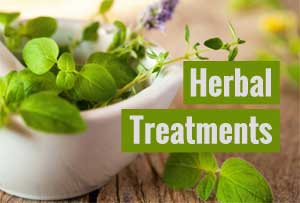- Home
- Editorial
- News
- Practice Guidelines
- Anesthesiology Guidelines
- Cancer Guidelines
- Cardiac Sciences Guidelines
- Critical Care Guidelines
- Dentistry Guidelines
- Dermatology Guidelines
- Diabetes and Endo Guidelines
- Diagnostics Guidelines
- ENT Guidelines
- Featured Practice Guidelines
- Gastroenterology Guidelines
- Geriatrics Guidelines
- Medicine Guidelines
- Nephrology Guidelines
- Neurosciences Guidelines
- Obs and Gynae Guidelines
- Ophthalmology Guidelines
- Orthopaedics Guidelines
- Paediatrics Guidelines
- Psychiatry Guidelines
- Pulmonology Guidelines
- Radiology Guidelines
- Surgery Guidelines
- Urology Guidelines
Herbal supplement may cause liver damage, confirms study

BOSTON – Kratom, a herbal supplement has stimulant effects at low doses, and sedative or narcotic, opioid-like effects at high doses. This is why it has abuse potential which every healthcare practitioners should be aware of. Kratom use is on the rise as the U.S. opioid epidemic continues to drive more patients to seek herbal supplements as pain-relieving alternatives.
Data from a new study presented this week at The Liver Meeting® – held by the American Association for the Study of Liver Diseases has found that kratom may cause liver toxicity and severe liver injury.
Kratom is a botanical product made from Mitragyna speciosa ─ a tropical evergreen tree in the coffee family found in Southeast Asia ─ with several active alkaloids driving its activity. It is widely available in smoke shops and online. At low doses, it's a stimulant whereas, at high doses, it has an opioid-like effect. However, more than 90 deaths have been attributed to kratom use. The study is a case series led by researchers from the U.S. Drug-Induced Liver Injury Network (DILIN). Their aim was to describe kratom-associated hepatotoxicity with chemical analysis to confirm that Mitragyna was present in the implicated products.
"The DILIN investigators recognized that an increasing number of liver injury cases due to kratom were enrolled into its prospective study in recent years, and this served as the impetus for this investigation," said Victor Navarro, MD, division head of Gastroenterology at Albert Einstein Healthcare Network in Philadelphia and the study’s lead author.
The researchers examined 404 cases of herbal and dietary supplement (HDS) associated liver injury in the DILIN Prospective Study cohort between 2004 and 2018, and they found that eight were associated with products that contain kratom - seven of which were convincingly associated with kratom. There was one case of exposure in 2007, one in 2008; and four cases in which exposure occurred more recently (one in 2014, another in 2016 and three in 2017). The researchers determined the likelihood that the liver injury incidents were HDS-associated through a structured, expert-opinion-based causality assessment method where the supplements involved were retrieved when available and analyzed using ultra-high-performance liquid chromatography-mass spectrometry.
Six of the seven liver injuries that the researchers thought were due to kratom occurred in men. The exposed patients’ median age was 46 (ranging from 25 to 70). Six were Caucasian. All the patients used alcohol, but none had major comorbidities. Five patients used kratom for its psychotropic effects, and one to treat joint pain. The patients used the botanical products for a median of 22 days (a range of 15 to 49 days) before the onset of liver injury. Five of the subjects had jaundice, six experienced itchings, five had abdominal pain and three had a fever. None exhibited a rash.
When the researchers analyzed liver test results, the study subjects’ median alanine aminotransferase (ALT) at onset was 326 U/L, their median aspartate aminotransferase (AST) was 154 U/L, their median alkaline phosphatase (Alk P) was 292 U/L, and their median total bilirubin was 9.5 mg/dL. The corresponding peak values of these results were 362 U/L, 154 U/L, 294 U/L, and 20.1 mg/dL. The median R factor value, a key measure to differentiate the types of liver injury present, at onset was 3.0, indicating a mixed hepatocellular and cholestatic injury.
According to Dr Navarro, liver injuries in the study occurred after a median latency period of two to six weeks and showed a mixed pattern. Two patients underwent a biopsy that revealed cholestasis. Six patients were hospitalized, and all patients recovered without a transplant. All three products that underwent chemical analysis contained kratom (Mitragyna speciosa) compounds and no other common hepatotoxins.
"[Health care] providers should be aware that this readily available substance commonly used for its psychotropic effects, is capable of causing severe liver injury," says Dr Navarro, noting the study’s results highlight a potential increase in liver injury episodes associated with kratom use that may be coinciding with the opioid epidemic.
For further reference:
Increasing episodes of hepatotoxicity in the drug-induced liver injury network associated with kratom, a botanical product with opioid-like activity abstract (number 0212) can be found in the journal, HEPATOLOGY

Disclaimer: This site is primarily intended for healthcare professionals. Any content/information on this website does not replace the advice of medical and/or health professionals and should not be construed as medical/diagnostic advice/endorsement or prescription. Use of this site is subject to our terms of use, privacy policy, advertisement policy. © 2020 Minerva Medical Treatment Pvt Ltd